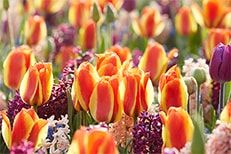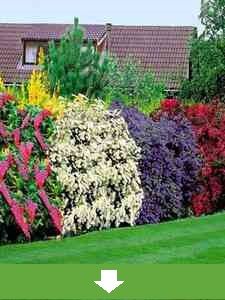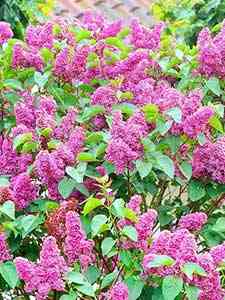Camellia
 Standard Camellia TreeCamellia japonica£26.95Out of stockOut of stockThe Standard Camellia Japonica tree is cherished for it’s beautiful double flowers and glossy dark green foliage, this evergreen ornamental... Learn More
Standard Camellia TreeCamellia japonica£26.95Out of stockOut of stockThe Standard Camellia Japonica tree is cherished for it’s beautiful double flowers and glossy dark green foliage, this evergreen ornamental... Learn More Camellia japonica red P9Camellia japonica ‘Lady Campbell’£8.95Out of stockOut of stockThis showy evergreen Camellia produces spectacular large deep red sweetly scented blooms early in the year. Ideal for tubs, borders or as part of a... Learn More
Camellia japonica red P9Camellia japonica ‘Lady Campbell’£8.95Out of stockOut of stockThis showy evergreen Camellia produces spectacular large deep red sweetly scented blooms early in the year. Ideal for tubs, borders or as part of a... Learn More Camellia Japonica PinkCamellia japonica ‘Bonomiana’£8.95Out of stockOut of stockThis showy evergreen Camellia Japonica Pink produces spectacular large pink sweetly scented blooms early in the year. Learn More
Camellia Japonica PinkCamellia japonica ‘Bonomiana’£8.95Out of stockOut of stockThis showy evergreen Camellia Japonica Pink produces spectacular large pink sweetly scented blooms early in the year. Learn More Camellia Japonica WhiteCamellia japonica 'Brushfield's Yellow'£8.95Out of stockOut of stockThis showy evergreen Camellia collection produces spectacular elegant white sweetly scented blooms early in the year. Ideal for tubs, borders or as... Learn More
Camellia Japonica WhiteCamellia japonica 'Brushfield's Yellow'£8.95Out of stockOut of stockThis showy evergreen Camellia collection produces spectacular elegant white sweetly scented blooms early in the year. Ideal for tubs, borders or as... Learn More Camellia collection pink/red/white£19.95Out of stockOut of stockThis showy evergreen Camellia collection produces spectacular large ruby red, pink and elegant white sweetly scented blooms early in the year. Learn More
Camellia collection pink/red/white£19.95Out of stockOut of stockThis showy evergreen Camellia collection produces spectacular large ruby red, pink and elegant white sweetly scented blooms early in the year. Learn More Camellia TricolourCamellia Tricolour£18.95Out of stockOut of stockA great evergreen specimen to create a stunning focal point in your garden and a real rarity! This NEW tricolour Camellia bush is an exceptional... Learn More
Camellia TricolourCamellia Tricolour£18.95Out of stockOut of stockA great evergreen specimen to create a stunning focal point in your garden and a real rarity! This NEW tricolour Camellia bush is an exceptional... Learn More Camellia japonica red 15 cm potCamellia japonica£18.95Out of stockOut of stockThis showy evergreen Camellia produces spectacular large deep red sweetly scented blooms early in the year. Ideal for tubs, borders or as part of a... Learn More
Camellia japonica red 15 cm potCamellia japonica£18.95Out of stockOut of stockThis showy evergreen Camellia produces spectacular large deep red sweetly scented blooms early in the year. Ideal for tubs, borders or as part of a... Learn More Camellia japonica White 15 cm potCamellia japonica£19.95Out of stockOut of stockThis showy evergreen Camellia collection produces spectacular elegant white sweetly scented blooms early in the year. Ideal for tubs, borders or as... Learn More
Camellia japonica White 15 cm potCamellia japonica£19.95Out of stockOut of stockThis showy evergreen Camellia collection produces spectacular elegant white sweetly scented blooms early in the year. Ideal for tubs, borders or as... Learn More Camellia japonica Pink P15Camellia japonica£19.95Out of stockOut of stockThis Camellia Japonica Pink is a very popular Camellia. This showy evergreen Camellia produces spectacular large pink sweetly scented blooms early... Learn More
Camellia japonica Pink P15Camellia japonica£19.95Out of stockOut of stockThis Camellia Japonica Pink is a very popular Camellia. This showy evergreen Camellia produces spectacular large pink sweetly scented blooms early... Learn More
Camellia or Camelia is the botanical name of the family Theaceae, or Tea.
The botanicus Carl Linnaeus named the plant after the jezuiet and botanicus Georg Joseph Kamel There are 150-200 known varieties; the tea that we drink is made from the foliage of the Camellia Sinensis. The Camellia varieties we grow in the garden are of the Masayoshi strain, originating from Japan.
Camellia hrubs grow best in a northwesterly location; in an acid soil (add peat to planting site if on a limey soil) Camellia dislike drought and drafts. The great flowers are a reward for the care they need, a well-established Camellia shrub can be covered with hundreds and hundreds of flowers, either single or double, depending upon the variety.
Follow the simple rules: Plant north-west, in peaty soil, during summer frequent rain water, twice organic fertiliser - march and June will do, and you will have an eye catcher in your spring garden.
Pruning Camellias
For major pruning the best time is while the plant is dormant from autumn to winter.
Minor pruning can be done any time but is best done after the plant has flowered and before it starts to develop New flower buds, if you prune before June you are almost certainly not to affect next year's blooms.
Prune on July or later and you run the risk of cutting off some of next year's flowersFor large flowering Varieties, remove all flower buds except the outward facing buds, this will encourage larger blooms.
Remember that flower buds are more swollen than leaf buds.
While you want reasonably dense foliage, it is a good idea to open up the plant and let in more light and air, encouraging growth from lower down, this will improve the health and flowering of the plant.
This type of pruning involves removing small branches and twigs that tend to grow in, to prune properly, make the cut close to the trunk, do not leave stumps.
Remove weak twigs that have only one weak terminal bud and no lateral shoot buds.
Vigorous shoots will have more than one Healthy terminal leaf bud and lateral ones on the side.




























